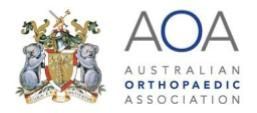Toe Deformities
What are Common Toe Deformities?
Toe deformities are common problems that occur due to abnormal positioning of the foot bones, inadequate biomechanics, and diseases such as arthritis affecting bones and tissues of the foot.
Toes are the digits in your foot and are associated with walking, providing balance, weight-bearing and other activities.
A variety of toe deformities occur in both adult and children's feet.
The most common toe deformities are:
Adults
- Bunion (Hallux Valgus): Hallux valgus is a common toe deformity in which the great toe is shifted laterally and lies over the second toe. The first metatarsal bone is deviated towards the medial side causing a prominence over the medial aspect of the metatarsophalangeal (MTP) joint. A fluid filled sac (bursa) may form over this prominence which may result in a painful bunion caused by continuous irritation and inflammation.
- Bunionette (Tailor Bunion):
Bunionette is less common and occurs at the fifth MTP joint. When this occurs, the fluid sac over the lateral side of the fifth MTP joint becomes prominent and inflamed causing pain. Padding is done to relieve the discomfort. If this does not help, surgical correction will be needed.
- Stiff Toe (Hallux Rigidus): Arthritis of the great toe joint causes pain, stiffness and inflammation.
- Hammer Toe: Hammer Toe is a deformity in which there is downward bending of the middle joint of the toe or the proximal interphalangeal joint (PIP). Although it can affect the other toes, it most commonly affects the second toe. It may be present at birth or may result from wearing shoes that are too tight which forces the toe to bend forward.
- Mallet Toe: Mallet toe refers to the downward bending of the third joint or distal interphalangeal joint (DIP) giving it a mallet-like appearance. Corns or calluses may develop over the deformity as a result of constant friction against the footwear. Mallet toe can be inherited or may develop from wearing shoes that are too tight or high-heeled.
- Claw Toe: Claw toe is a rare deformity but occurs in association with cavus foot, Charcot-Marie-Tooth disease or diabetes. It affects all the toe joints and results from hyperextension of the metatarsophalangeal (MTP joint or 1st joint) and flexion at the PIP (2nd joint), and DIP (3rd joint) joints. It results from altered structural anatomy and /or neurologic disorder that cause muscle imbalances.
Children
- Curly Toe: Curly toes are present at birth and affect the third, fourth and fifth toes of one or both the feet. It is caused by tightening of the tendon that runs below the toe which results in pulling of the tip of the toe under the next toe towards the sole. Your child may develop areas of hard skin on the sole of the foot and may have difficulty in selecting suitable shoes that fit properly. Generally, no treatment is needed if curly toes do not cause any symptoms but if the condition becomes severe and causes irritation, then surgery may be performed to release of the toe flexor.
- Overriding toe: Typically affects the little toe and is often present from birth and may lead to the little toe 'riding' on top of the 4th toe. It can cause issues with rubbing and pain from shoewear, and may require surgery to correct.
- Polydactyly: It is a condition in which there is an extra digit present in the feet. The great toe or the fifth toe is usually affected. It may occur in association with other congenital anomalies or as an isolated problem. If the extra digit does not cause any problem, it may be left alone without any treatment. Surgical excision of the extra digit will be done in cases where there is an extra little or big toe that is prominent causing difficulty in wearing shoes.
- Syndactyly: Syndactyly is the presence of fused digits and may occur along with other congenital anomalies or as an isolated problem. It rarely causes any problems and does not need any treatment. The connection between two or more toes varies from a thin skin attachment to a bony attachment (synostosis) between the phalanges.
What are Causes of Toe Deformities?
Certain disease conditions such as diabetes, stroke, osteoarthritis, and rheumatoid arthritis affect the functioning of muscles and nerves and can cause tightening of ligaments or tendons resulting in these deformities.
Toe deformities can be
- Congenital, present at birth, or can occur later in life.
- Wearing improperly fitted shoes or high heeled shoes.
- Accidents or injuries can result in fractures and lead to toe deformities.
Symptoms of Toe Deformities
At the onset of the problem, the deformed toe is usually flexible, Therefore, it is recommended to see your doctor for early treatment measures.
The symptoms include
- Feeling pain while wearing shoes
- Having difficulty finding properly fitted and comfortable shoes.
Toe deformities not only affect the alignment of the bones, joints and tissues in the foot, but may also affect alignment of the weight bearing joints such as the hips or knees resulting in further problems.
How are Toe Deformities Diagnosed?
Toe deformities are simply diagnosed by your doctor and usually no diagnostic test is required. However, in cases where the physician suspects nerve involvement, then special tests may be ordered.
Medical History
Your doctor will ask questions about:
- Current symptoms and their severity
- If an injury was sustained
- Your medical history including family or genetic links
- Your current and past medications
- The impact of the problem on your occupation and lifestyle
Physical Examination
Your doctor perform comprehensive physical evaluation that will include:
- Examining the affected area for swelling, pain, bruising or other features
- Assessing your range of motion, walking pattern and other relevant features
Diagnostic Testing
Once your doctor has completed the physical examination further tests maybe required. These tests can help your doctor determine or eliminate possible causes. These can include:
- X-Ray
- Ultrasound (US)
- Computerised Tomography (CT)
- Magnetic Resonance Imaging (MRI)
Once a final diagnosis has been completed your doctor can discuss with you and recommend any treatment options.
Non Surgical Treatment for Toe Deformities
Initially, toe deformities are treated by conservative treatment measures to restore or maintain walking ability, relieve pain, and also to delay progression of the deformity. Conservative treatment includes:
- Wearing specially designed shoes with cushions or pads (such as toe socks) with an enlarged toe box area to prevent skin breakdown.
- Splints or tape may be applied to reposition the toes
Surgery for Toe Deformities
Surgical treatment is recommended if conservative treatment fails to relieve symptoms, or the deformed toes become rigid and immovable. The main objective of the surgery is to restore normal toe alignment and return the foot to normal pain-free function. The surgical procedure is chosen based on the stability of the deformed toe, whether it is flexible or not.
- Flexible Toe - Where flexibility exists in the toe, then the surgeon will make an incision over the deformed toe joint and realign the tendons and ligaments. Pins may be placed to keep the toe in position while healing.
- Rigid Toe - In cases where the deformity is rigidly fixed, then the surgeon will make an incision over the joint of the deformity, realign the tendons and ligaments, and also perform an fusion to realign the toe.
What if Toe Deformities go Untreated?
If left untreated a Toe Deformity can become rigid and immovable, causing pain and possibly affecting your ability to walk.







